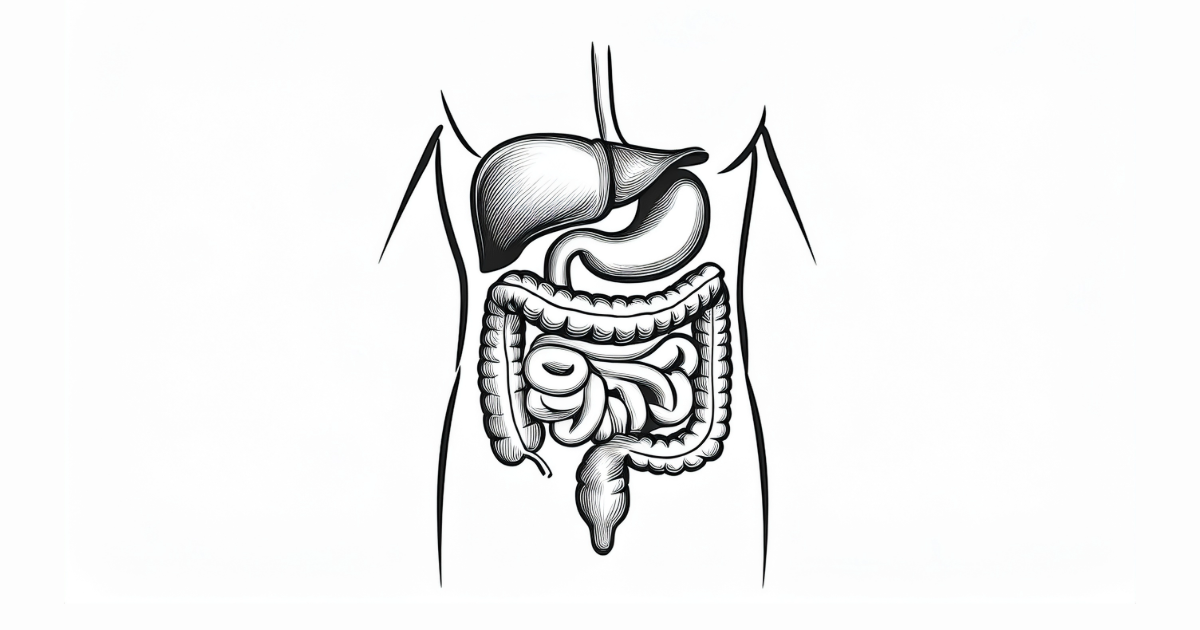We’re only a few weeks away from Black Friday, but plenty of retailers are already offering major discounts on big-ticket items such as large TVs from one of our favorite brands, LG. In fact, right now we’ve seen a discount of $1,703 on a 77-inch…
Blog
-

Clinical Data Support Use of Low-Carbon Version of Albuterol Metered Dose Inhaler for Asthma
Clinical data confirm that the formulation of the metered dose inhaler (MDI), albuterol (Ventolin; GSK), containing a low-carbon propellant HFA-152a, has therapeutic equivalence and is comparable in safety to salbutamol MDI containing HFA-134a, the current propellant, according to a news release from the manufacturer. These findings support regulatory submissions for a next-generation version of albuterol, referred to as salbutamol outside of the US, which will bring a more sustainable option to patients who have respiratory diseases.
Albuterol is approved by the FDA for the treatment and prevention of acute or severe bronchospasm in patients with reversible obstructive airway disease, such as asthma and chronic obstructive pulmonary disease (COPD). Albuterol acts on β2-adrenergic receptors, inducing bronchial smooth muscle relaxation and inhibiting immediate hypersensitivity mediator release, particularly from mast cells. Albuterol also affects β1-adrenergic receptors, but the impact is minimal, thereby exerting little effect on a patient’s heart rate.2
Albuterol is available in various dosage forms and strengths, including an aerosol metered-dose inhaler delivering 90 mcg (base)/actuation, equivalent to 108 mcg of albuterol sulfate; a powder metered-dose inhaler form providing the same values as the aerosol metered-dose inhaler; 2-mg and 4-mg tablets; 4-mg and 6-mg extended-release tablets; nebulized solutions, including 0.083%, 0.5%, 0.63 mg/3 mL, and 1.25 mg/3 mL; and an oral syrup in a concentration of 2 mg/5 mL.2
In the absence of albuterol’s bronchodilatory effects, patients experiencing bronchospasms may face the risk of catastrophic asphyxiation, emphasizing the crucial need for patients to have a readily available treatment. According to the manufacturers, nearly half a billion people are affected by asthma and COPD worldwide.1,2
“Healthy air is essential for healthy lungs, and our next-generation [albuterol] has the potential to reduce greenhouse gas emissions by 92% per inhaler. Almost 6 decades after its first development, this medicine remains highly valued by patients and health care professionals and is a key component of our respiratory portfolio. Today, we are one step closer to a reliever MDI that we believe will continue to help patients for many decades to come,” Kaivan Khavandi, senior vice president, global head of respiratory, immunology & inflammation research and development at GSK, said in a manufacturer news release.1
WHO considers climate change to be the biggest global health issue, and patients with chronic respiratory diseases such as asthma and COPD are particularly susceptible to variable weather conditions and extreme weather events. Short-acting β2-agonists (SABAs) are typically used as reliever medications for the short-term relief of asthma and COPD symptoms; however, they are also responsible for approximately 70% of total inhaler-related greenhouse gas (GHG) emissions. The development of MDI devices that contain low global warming potential (GWP) propellants can reduce the carbon footprint of MDIs while balancing reduced GHG emission goals with patient health and well-being.3
The aim of the trial was to assess the carbon footprints of albuterol HFA-152a MDI, albuterol HFA-134a MDI, and an albuterol dry-powder inhaler (DPI). For this study, 3 cradle-to-grave lifecycle analyses (LCA) were undertaken to compare the carbon footprints of albuterol HFA-152a MDI, albuterol HFA-134a MDI, and albuterol DPI. Over 600 individual emission factors were calculated from over 2000 data points and categorized into active pharmaceutical ingredient manufacture, micronization, device, formulation and packaging, use phase, distribution, and end-of-life stages.3
The data show that the average carbon footprint values were about 27.09, 2.24, and 0.76 kg CO2e per device for albuterol HFA-134a MDI, albuterol HFA-152a MDI, and albuterol DPI, respectively, representing an approximate 92% reduction in carbon footprint for albuterol HFA-152a MDI compared with albuterol HFA-134a MDI. The investigators observed that the difference was primarily driven by the patient use phase. These findings suggest that substituting the currently available HFA-134a propellant with a new HFA-152a candidate propellant could substantially reduce the carbon footprint of a SABA reliever.3
“While low carbon alternatives already exist, such as dry powder and soft mist inhalers, we know that many patients worldwide with both asthma and COPD prefer a[n albuterol] MDI to relieve their symptoms. These data should enable patients to use their preferred inhaler choice. This is a crucial advance to help global health care systems meet their climate targets at the same time as optimizing the care of patients,” Ashley Woodcock, professor of respiratory medicine at the University of Manchester, said in the news release.1
REFERENCES
1. GSK. GSK announces positive pivotal phase III data for next-generation low carbon version of Ventolin (salbutamol) metered dose inhaler. News release. October 22, 2025. Accessed October 27, 2025.
https://www.gsk.com/en-gb/media/press-releases/gsk-announces-positive-pivotal-phase-iii-data-for-next-generation-low-carbon-version-of-ventolin-salbutamol-metered-dose-inhaler/ 2. National Library of Medicine – National Center for Biotechnology Information. Albuterol. Updated January 10, 2024. Accessed October 27, 2025.
https://www.ncbi.nlm.nih.gov/books/NBK482272/ 3. Plank M, Anzueto A, Janson C, Henderson R, Fulmali S, and King J. Decarbonizing Respiratory Care: The Impact of a Low-carbon Salbutamol Metered-dose Inhaler [abstract]. Am J Respir Crit Care Med. 2025;211:A5548. doi:10.1164/ajrccm.2025.211.Abstracts.A5548
Continue Reading
-

Jennifer Lawrence Hates Press, Says Old Interviews Are ‘Annoying’
Jennifer Lawrence recently told The New Yorker that she is hesitant to speak to the press while promoting her movies. The Oscar winner has been a tabloid fixture for 15 years and once told fellow actor Viola Davis: “Every time I do an…
Continue Reading
-

NBA Fantasy: Start/sit guide for Week 2
The Hawks’ Onyeka Okongwu will continue playing a significant role regardless of Kristaps Porziņģis’ availability on any given night.
Following a momentous Week 1, where we were treated to an abundant number of hard-fought overtime clashes…
Continue Reading
-
Just a moment…
Just a moment… This request seems a bit unusual, so we need to confirm that you’re human. Please press and hold the button until it turns completely green. Thank you for your cooperation!
Continue Reading
-

Biologic Sex and Obesity Shape Post-Surgical Outcomes in Pancreatic Cancer Study | Targeted Oncology
As the incidence of obesity continues to rise nationally and globally, a new observational study published in Cancer reports that liver recurrence and survival outcomes in patients with pancreatic adenocarcinoma (PDAC) after upfront surgical…
Continue Reading
-

Dixie D’Amelio, Lili Reinhart & More Celebrate Staud’s Melrose Store
Staud threw open the doors to its new Melrose Avenue flagship in Los Angeles last week, unveiling the boutique alongside the debut of its holiday 2025 collection.
Cofounders Sarah Staudinger and George Augusto hosted friends…
Continue Reading
-

Fogarty Innovation and CRF unite to accelerate breakthroughs in cardiovascular medicine
After several years of close collaboration and a relationship rooted in mutual respect and shared vision, Fogarty Innovation is coming together with the Cardiovascular Research Foundation® (CRF®) to create a unified platform for advancing transformative healthcare technologies. This strategic combination strengthens CRF’s leadership in medtech by integrating Fogarty’s renowned expertise in early-stage innovation, creating a powerful, cross-specialty platform to accelerate transformative breakthroughs into patient care. The merger was announced during a special keynote session at the Transcatheter Cardiovascular Therapeutics® (TCT®) meeting.
This platform unites two mission-driven organizations with a shared vision: to catalyze the next generation of disruptive medical technologies by advancing innovations that have the power to transform patient care and reshape the future of healthcare. It builds on a strong track record of successful collaboration: CRF and Fogarty Innovation have partnered on the TCT MedTech Innovation Forum over the past four years, fostering early-stage innovation and supporting emerging medtech entrepreneurs. Together, they form a powerful alliance poised to accelerate progress in cardiovascular medicine and transform patient care on a global scale.
The unified platform will unlock immediate access to world-class incubation, long-term strategic growth, and enhanced philanthropic impact. By combining the deep expertise of both organizations, it will provide unparalleled access to seasoned medtech executives, expand innovation education initiatives, and increase business opportunities in Silicon Valley and beyond – all while accelerating the development of cutting-edge technologies and driving measurable improvements in patient care.
Fogarty Innovation will continue to carry its name and mission, now serving as CRF’s West Coast innovation hub. Together, CRF and Fogarty Innovation will amplify their collective impact by combining resources, expertise, and leadership – aligning on strategic initiatives to drive innovation and expand their reach across the cardiovascular landscape.
“We’re thrilled to enter into this partnership with our close friends and colleagues at Fogarty Innovation,” said Juan F. Granada, MD, President and Chief Executive Officer of CRF. “We are entering a groundbreaking era in cardiovascular medicine; one defined by unprecedented technological potential. This move is not just a step forward; it is a bold move to lead the future. By uniting our strengths into a single, purpose-driven platform, we are shaping the development of transformative technologies that will redefine care and bring us closer to a more equitable health care system.”
Over the past 17 years, Fogarty Innovation has demonstrated that our model of immersive support – through incubation, acceleration, education, and alliances – meaningfully increases the success of innovators in bringing new tools and therapies to clinicians and patients. We are excited to join forces with CRF, as we can now scale that impact globally, giving entrepreneurs a larger stage, stronger resources, and a faster path to delivering transformative care.”
Andrew Cleeland, CEO of Fogarty Innovation
“Our partnerships have always been rooted in trust, shared purpose, the highest ethical standards, performance excellence, and a commitment to transform the lives of patients everywhere,” said Martin B. Leon, MD, Founder and Chairman Emeritus of CRF. “CRF’s mission to advance cardiovascular care through research and education will be amplified by Fogarty Innovation, opening new opportunities for collaborations, advanced innovation, and strategic growth – ultimately, impacting the science and practice of medicine worldwide.”
Source:
Cardiovascular Research Foundation
Continue Reading
-

Astronomical data collection of Taurus Molecular Cloud-1 reveals over 100 different molecules | MIT News
MIT researchers recently studied a region of space called the Taurus Molecular Cloud-1 (TMC-1) and discovered more than 100 different molecules floating in the gas there — more than in any other known interstellar…
Continue Reading
-

PCI With A Sirolimus-Eluting Balloon And Provisional Stenting Shows Comparable Outcomes To Routine DES Implantation For Treatment Of De Novo Coronary
New study results from a large international all-comer population of percutaneous coronary intervention (PCI) candidates found that utilizing a strategy of sirolimus-eluting balloons with bailout stenting only if necessary was noninferior to routine drug-eluting stent (DES) implantation as part of the treatment for de novo coronary artery disease.
Findings were reported today at TCT® 2025, the annual scientific symposium of the Cardiovascular Research Foundation® (CRF®). TCT is the world’s premier educational meeting specializing in interventional cardiovascular medicine.
DES are implanted in the vast majority of PCIs with well-established immediate and mid-term outcomes. However, long term follow-up studies have reported annual adverse event rates of 2-4%. This has led to a growing interest in strategies that minimize metallic stent implantation to potentially reduce late events. The study used the SELUTION SLR Drug-Eluting Balloon (DEB) which delivers a sustained drug release maintaining therapeutic tissue concentration for up to 90 days designed to have a similar elution profile to current DES.
Between August 2021 and July 2024, a total of 3,341 participants were randomized one to one to either the DEB (n=1,671) or DES strategy (n=1,670) at 62 sites in 12 countries across Europe and Asia. Patients with lesion reference vessel diameter (RVD) ≥2.0 and ≤5.0 mm were eligible for inclusion. Baseline characteristics were similar in both groups, with a relatively high proportion of patients presenting with acute coronary syndromes or having high bleeding risk. Randomization occurred after angiography when all target lesions were considered suitable for either strategy and prior to lesion wiring and lesion preparation. Eighty percent of participants treated with the SEB did not require a stent.
The primary endpoint of target vessel failure, comprised of cardiac death, target vessel-related myocardial infarction and clinically driven target vessel revascularization, occurred in 5.3% of the DEB strategy group and 4.4% of the DES strategy group at one year (Risk Difference 0.91, 95% CI: -0.55, 2.38%, Pnoninferiority=0.02). No acute or late safety concerns were noted with the DEB strategy, with low rates of cardiac death (0.70% vs 1.0%), lesion thrombosis (0.1 %vs 0.3%), and target vessel myocardial infarction (2.7% vs 2.6%) comparable with DES.
The SELUTION DeNovo trial provides the first comparison of a PCI strategy based on the use of sirolimus-eluting balloons versus systematic implantation of DES in a large international all-comer population of PCI candidates. With no acute or late safety concerns, these results apply to a significant segment of PCI procedures including high-risk patients and complex lesions. We look forward to obtaining five-year data to determine long-term noninferiority or possible superiority of this strategy.”
Christian M. Spaulding, MD, PhD, Chief, Integrated Interventional Laboratory at European Hospital Georges Pompidou in Paris, France
The study was funded by M.A. Med Alliance SA (a Cordis Company), Switzerland.
Dr. Spaulding reported receiving grant /research support from the French Ministry of Health, CERC; consultant fees / honoraria from Medtronic, Techwald, Sanofi, Novartis Sonivie, Valcare and Boston Scientific as well as individual stock(s)/stock options/salary support from Cordis (MedAlliance) and Sonivie.
The results of the study were presented on Sunday, October 26, 2025, at 11:00 a.m. PT in the Main Arena (Hall A, Exhibition Level, Moscone South) at the Moscone Center during TCT 2025.
Source:
Cardiovascular Research Foundation
Continue Reading
